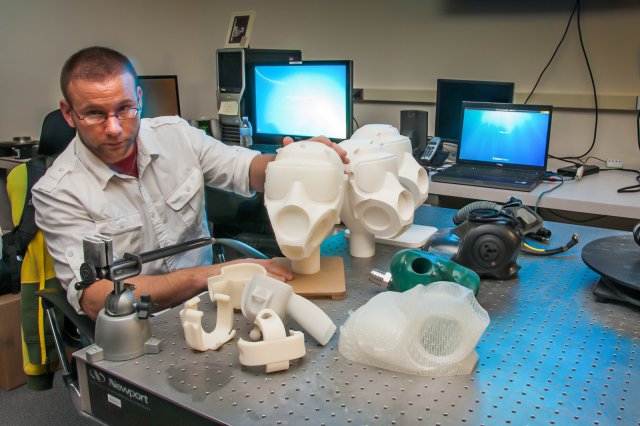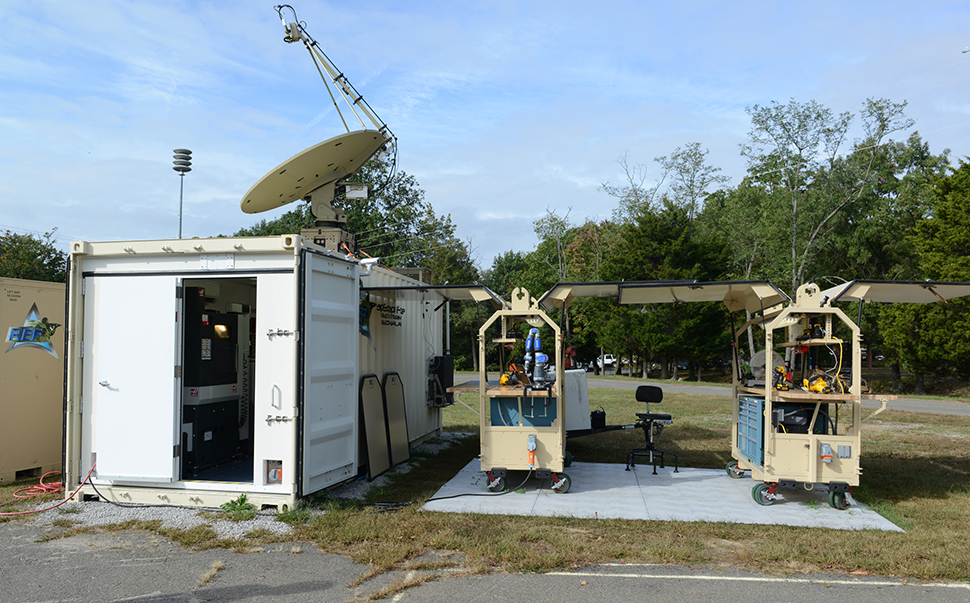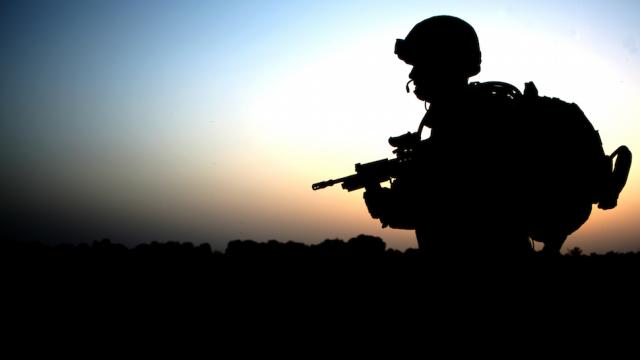We all know by now that 3D printing is the future of manufacturing — even the US President says so. The march of progress doesn’t always move as quickly as we’d like, however, especially when the military-industrial complex is involved. While 3D printing machines are becoming steadily cheaper and the possibilities incredibly sophisticated, the disparate branches of the US armed forces tend to move slowly, weighed down by procedure and convention. However, there’s plenty of evidence to believe that’s changing when 3D printing is concerned.
Let’s start with the possibilities. 3D printing makes it possible to manufacture pretty much anything in just a few hours, and, as you can surely imagine, this capability would come in very handy on the battlefield. A piece of equipment breaks — but, instead of scrapping it or attempting a trip back to base, soldiers can simply 3D-print the replacement part they need to get back up and running in a matter of minutes (or hours). This would be especially handy in remote areas or on the open ocean where it’s not so easy to keep an extensive inventory of spare parts.
It’s not just spare parts, either. The latest advances in 3D-printing technology include the ability to print ammunition to re-supply troops during a firefight. “Imagine a soldier on a firebase in the mountains of Afghanistan,” Dartmouth College business professor Richard D’Aveni told the Associated Press earlier this year. “A squad is attacked by insurgents. The ammunition starts to run out. Is it worth waiting hours and risking the lives of helicopter pilots to drop it near you, or is it worth a more expensive system that can manufacture weapons and ammunition on the spot?”

Image courtesy of the U.S. Army
There’s another layer of benefit here, too. The perks of 3D printing also make it cheap and easy to build more customised equipment, gear that wouldn’t necessarily be possible using traditional methods of manufacturing. One example includes so-called logical structures that make use of modular designs for specific purposes like armour on aircraft or vehicles. Sophisticated computer analysis allows for tailor-made structures with smaller components that can be quickly 3D-printed in the field if they’re damaged. Scientists at MIT are already using similar methods to 3D-print bio-inspired armour that resembles fish scales and enable more mobility than existing armour.
Innovation also wins with 3D printing. The fast and cheap manufacturing method allows troops to work more closely with engineers, making rapid-prototyping possible. So, instead of waiting for some lab state-side to come up with a new design for an aircraft component, engineers could simply build their own while deployed on an aircraft carrier in the middle of the sea.
The Navy’s already working on making this a reality. The newly formed Chief of Naval Operations’ Rapid Innovation Cell already has 3D printers up and running in San Diego and Norfolk. The ambition is to get printers on ships as early as next year. The Navy’s already started making lists of parts that can be 3D printed, and some officers are even talking about “biomining” the ocean for the raw materials needed to supply them. “What we envision is having an additive manufacturing facility aboard a carrier,” Lt. Benjamin Kohlmann, the Naval Innovations and Concepts Officer who’s overseeing the effort, recently explained to Navy Times. “If they somehow get their logistics chain cut off, they have the ability to organically create materials, both plastic and metal, whatever they want, for the battle group that they’re supporting.”

Image courtesy of the U.S. Army
The Army’s actually already gotten started with their 3D printing — and 4D printing — initiatives. With help from the Rapid Equipping Force recently started rolling out the concept of an Expeditionary Lab Mobile (ELM). Built in shipping containers and manned both by soldiers and engineers, ELMs made their first appearance this year in Afghanistan, where there are now three of them.

Image courtesy of the U.S. Army
Army Research Labs is also developing its own 3D printer that will cost a little less than $US700 to build and can print spare parts for soldiers in the field. For the record, that’s less than a third of the price of the Makerbot Replicator 2, a leading 3D printer for consumers.
Getting started is the easy part, though. What stands between a military that experiments with 3D printing and one that actually runs on it is a mess of procedural and legal challenges that could take years to untangle. The main problem is the Pentagon’s arduous and often time-consuming approval process. Before any piece of equipment can make it into soldiers’ and sailors’ hands, it must first clear several rounds of testing to ensure that it consistently stands up to military specifications. This process is not very compatible with the fast-moving world of 3D printing. In fact, the Pentagon doesn’t even have tests in place yet for the materials used for 3D printing.
Beyond the bureaucratic challenges, there’s a somewhat unexpected problem: intellectual property rights.
Every piece of equipment that the military doesn’t design itself is subject to intellectual property protection. The original manufacturers own the rights. That includes the computer-assisted design (CAD) files that 3D printers use as a roadmap to make objects. No one’s really sure how to manage the manufacture of individual components, and Lieutenant Commander Michael Llenza, who’s studied the military’s use of 3D printing extensively, says that the Pentagon “does not have a clear strategy” for its 3D printing strategy moving forward.

Image courtesy of the U.S. Army
But there is forward motion, however disorganised. This year, the president launched a $US200 million initiative to build three new manufacturing centres across the country focusing on 3D printing, two of which will fall under the Defence Department’s purview. One will focus on streamlining the manufacturing process, while the other will work on developing stronger, lighter-weight materials for use in 3D printing. President Obama also called on Congress to invest another $US1 billion in building up to 15 more centres.
The new strategy can all be traced back to one line in the president’s 2012 State of the Union address: “A once-shuttered warehouse is now a state-of-the art lab where new workers are mastering the 3-D printing that has the potential to revolutionise the way we make almost everything.” So when you think about the future of 3D printing in the military, you should realise that the implications reach far beyond the battlefield.
